CBD Basics
CBD, short for cannabidiol, has been gaining tremendous popularity in recent years, both in scientific and consumer circles. For many, CBD has become part of their daily routine, but what is CBD and how does it work? The purpose of the following information is to further educate you on this naturally occurring chemical compound and provide guidance when choosing CBD products.
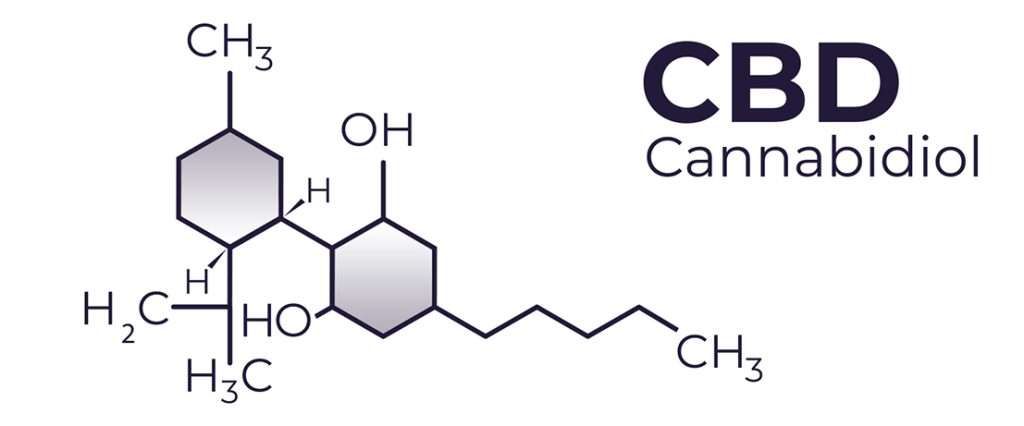
What Is CBD?
CBD is one of the many (over 100 identified) cannabinoids found in the flowers, leaves and stems of the cannabis plant. Also known as phytocannabinoids, these cannabinoids are a group of naturally occurring chemicals that act on specific receptors found in the endocannabinoid system or ECS. The ECS is a recently discovered, specialized biological system that has been found in most animal species, including all vertebrates and some invertebrates and plays an invaluable role in promoting homeostasis, or inner balance. CBD does not cause the intoxicating effects that are associated with another common cannabinoid, THC (Tetrahydrocannabinol).
Other important cannabinoids include CBG (Cannabigerol), CBC (Cannabichromene), and CBN (Cannabinol). These are just a few examples of the cannabinoids that the scientific community has identified. There may be more cannabinoids that have yet to be discovered.
How Does CBD Work?
As mentioned above, CBD works on specific receptors (cannabinoid receptors) in the biological system known as the endocannabinoid system or ECS. Most animal species, including many invertebrates, have some form of an ECS. In our explanation, we will limit our discussion to the human ECS.
Only recently discovered, the endocannabinoid system is considered one of the most significant biological systems in the human body. Labeled as one of the most important discoveries of the late 20th century, scientists are still working to obtain a better understanding of how the ECS works. The ECS is a complex system composed of neurotransmitters known as endocannabinoids, cannabinoid receptors, transport proteins and receptor enzymes. Thought to play a major role in physiologic and cognitive functions, the ECS has been described as “a bridge between the body and the mind.”
Some of these functions may include:
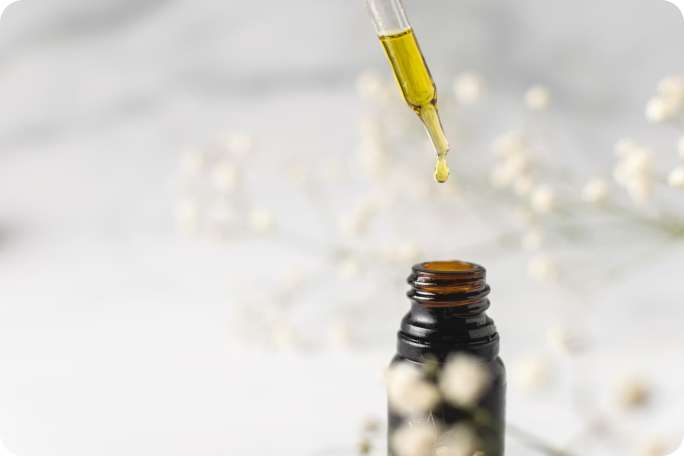 CBD is found in many but not all parts of the cannabis plant. It is found primarily in the flowers and to a lesser extent, the leaves and stalks. These plant structures are known as the aerial parts of the plant. The roots and seeds do not contain significant amounts of CBD, which makes it important for consumers to make sure of the CBD content within products they consume.
CBD is found in many but not all parts of the cannabis plant. It is found primarily in the flowers and to a lesser extent, the leaves and stalks. These plant structures are known as the aerial parts of the plant. The roots and seeds do not contain significant amounts of CBD, which makes it important for consumers to make sure of the CBD content within products they consume.
Certain savvy marketers sell hemp oil or hemp seed oil under the pretense that these products contain CBD, when in fact they are derived from the parts of the cannabis plant that contain little to none, including the roots and the seeds.
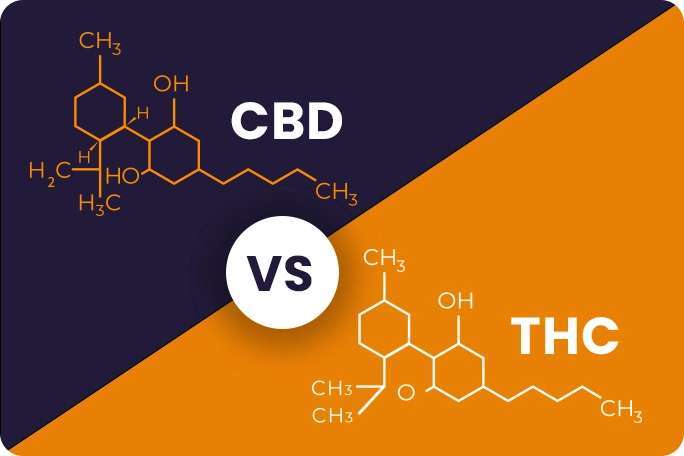 Hemp is not new to the United States of America. Several founding fathers, including George Washington, were hemp farmers. Later on in 1970, hemp was outlawed due to its association with marijuana and THC.
Hemp is not new to the United States of America. Several founding fathers, including George Washington, were hemp farmers. Later on in 1970, hemp was outlawed due to its association with marijuana and THC.
However, after the realization that hemp has many industrial benefits, and contains very little intoxicating THC, within the Agricultural Act of 2014, hemp was defined as varieties of Cannabis sativa and any part of such plant that contains 0.3% or less THC on a dry weight basis.
This created a broad legal definition of hemp resulting in the most important distinction between hemp and marijuana. The other defining characteristics associated with plant appearance have been blurred by artificial selection, making it difficult to differentiate the varieties by appearance alone. These days, marijuana and hemp can look remarkably similar.
For the remainder of this introduction, we will use “high-THC cannabis” when referring to marijuana.
 It is believed that cannabis originated in central and southeast Asia thousands of years ago as the oldest know fiber cultivation crop. The first known record of cannabis being used was in China dating back to 4000 BC. It was not introduced to the New World until the mid-1500s.
It is believed that cannabis originated in central and southeast Asia thousands of years ago as the oldest know fiber cultivation crop. The first known record of cannabis being used was in China dating back to 4000 BC. It was not introduced to the New World until the mid-1500s.
Cannabis did not make its way to North America until the early 1600s, when industrial hemp quickly became identified as a valuable crop. So much so, that in the 1700s, the federal government required hemp to be grown by American farmers.
In 1854, the U.S. Pharmacopeia recommended medicinal cannabis for treating many ailments. Cannabis was widely used medicinally and for industrial purposes until the Marijuana Tax Act of 1937, imposing taxes on the sale of all derivatives of the plant. Although still considered legal, this tax led to an overall decline in industrial hemp cultivation. Driven by decades of the criminalization and demonization of high-THC cannabis, hemp became illegal in 1970, when the Controlled Substances Act classified all forms of cannabis, including industrial hemp, as an illegal Schedule I controlled drug.
However, this did not stop the scientific community from continuing to look to cannabis as a potential source for treating disease. Soon after cannabis was made illegal by the federal government in the U.S, a Brazilian scientist named Elisaldo Carlini began to conduct the first known studies looking specifically at CBD and its beneficial effects in humans. This ultimately led to many people seeking out strains of cannabis that contained higher levels of CBD. In 2009, with the advent of Project CBD by a group of journalists dedicated to CBD and its potential therapeutic uses, CBD quickly gained the reputation as a potential alternative treatment modality for use in humans.
It wasn’t long before everyone wanted access to CBD, still considered illegal by the Controlled Substance Act of 1970. Forty years would elapse before any change to hemp policy would be initiated by the federal government. This change was most likely driven by increased public interest in CBD and in 2014, the Farm Bill was passed. This bill accomplished two things regarding these policies. It made the distinction between hemp and high-THC cannabis by defining hemp as containing 0.3% or less of THC. The bill also allowed for individual states to implement laws for research institutions and state agricultural agents to legally cultivate hemp in pilot agricultural programs.
Hemp was made legal by the 2018 Farm Bill Amendment, when hemp (containing 0.3% or less THC), along with any of its derivatives, was removed from the Controlled Substances Act. Much is still unclear and open for interpretation regarding hemp and hemp derived products. However, the passing of the 2018 Farm Bill helped spark further interest in hemp’s potential uses and products, especially CBD oil.
 During recent years, CBD oil, hemp oil and hemp seed oil have become wildly popular to consumers and available through many mainstream retailers. Some people have the misconception that these different products are essentially the same thing.
During recent years, CBD oil, hemp oil and hemp seed oil have become wildly popular to consumers and available through many mainstream retailers. Some people have the misconception that these different products are essentially the same thing.
This can create uncertainty and confusion when choosing a product that is best suited for a person’s individual wants or needs.
As discussed earlier, hemp seeds contain only trace amounts of CBD, typically found in the seed’s outer coating or shell. Hemp seed oil is obtained via a process known as cold pressing, which is a mechanical form of extraction conducted at low temperatures. Due to the trace amounts of CBD in hemp seed, the resultant oil is not a significant source of CBD. It does contain many other beneficial ingredients like essential amino acids and Vitamin E, all of which are important in optimizing overall health.
Hemp oil is often used interchangeably with hemp seed oil. However, it can also be used as a blanket description for any oil that is extracted from any part of the hemp plant, whether it be from the seed, stalk, or flower. Location is key and depending on what parts of the plant are used during the extraction process, the resultant amount of detectable CBD will vary. Some products advertised as hemp oil may in fact contain little to no CBD.
CBD oil is produced by extracting CBD from the parts of the hemp plant that have higher concentrations of CBD, mainly the hemp flower. There are many different extractions methods that are currently being used to produce CBD oil, each has its own advantages and disadvantages. The two most common methods are solvent extraction and CO2 extraction.
Route of administration means the way in which a substance or drug is taken into the body. These routes include inhalation, oral, sublingual/transmucosal, and topical routes, just to name a few.
Inhalation: The advantage of inhaling a substance is that it has the shortest time to take effect, usually seconds to minutes. However, as we all know, smoking and vaping can be harmful to the lungs. In a society that is becoming more health-conscious, inhalation is not considered an ideal way to consume CBD.
Oral: The oral route is one of the most common ways to introduce drugs or substances into our bodies. The disadvantage of consuming CBD by mouth is related to what is known as the first-pass effect, also known as first-pass metabolism. First-pass metabolism refers to how both the digestive tract and the liver can reduce the bioavailability, or systemic absorption, of a substance.
Sublingual/transmucosal: One way to escape the first-pass effect is to place an oral CBD product underneath the tongue or inside the cheek, for sublingual or transmucosal absorption. This allows CBD to be absorbed directly into the bloodstream. However, to be effective, the product must be in contact with the tissue for a specific amount of time.
Topical: Another route of administration that is not affected by first-pass metabolism are topical preparations. However, absorption is limited by the protective characteristics of the largest organ in the body, the skin.
Recent improvements in different drug delivery systems, including liposomal and nanoparticle technologies, have proven effective in increasing the bioavailability of many drugs. Both technologies essentially make it easier for CBD to be absorbed by the body no matter how it is used. These advancements can also improve how long CBD will continue to work once it is absorbed.
CBD can be found in many different preparations from oral tinctures to topical lotions. Your individual needs will influence which preparations you feel are best suited for you. Research has shown that oral and transmucosal preparations have a much higher effect on the body compared to topical products. However, topical CBD products may provide benefits as well.
Two important factors to consider when choosing a CBD product are the ingredients and the product’s formulation. We have recently discovered that while some CBD products claim to contain CBD, there is in fact little to no CBD present. In actuality, only a very small percentage of over-the-counter CBD products contain the amount of CBD that is on the label. The quality of the CBD can also vary. Internationally sourced CBD (sourced from outside the United States) can be less expensive but tends to be inferior in quality when compared to domestically sourced CBD.
Product formulation refers to how the composition of a product will influence the delivery of an active ingredient, CBD in this case, in a stable and usable form.
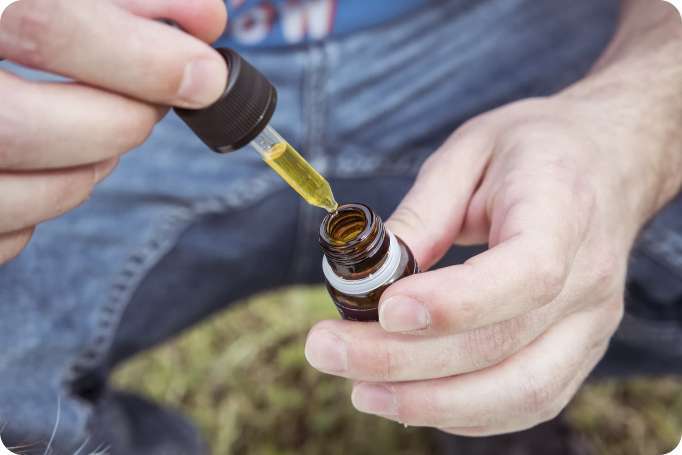 CBD does not cause the intoxicating effects (“high”) associated with THC. The reason being THC and CBD act on the endocannabinoid system (ECS) in completely different ways.
CBD does not cause the intoxicating effects (“high”) associated with THC. The reason being THC and CBD act on the endocannabinoid system (ECS) in completely different ways.
THC directly binds to CB1 and CB2 receptors and exhibits most of its intoxicating effects by binding directly to CB1 receptors found in the brain. CBD has a lower affinity for these receptors and is thought to work more indirectly by modifying the receptor’s binding ability for other cannabinoids and by influencing additional molecular pathways in the ECS. Some of these pathways include:
- Dopamine D2 receptor binding: Crucial in regulating behavior and cognition.
- 5-ht1A Activation: Wide variety of potential benefits, including increased mental stability, fatigue reduction, and decreased pain perception.
- Adenosine Enhancement: Important in reducing inflammation and potential for treating autoimmune disorders.
- TRPV1 Activation: Role in regulation body temperature, pain and inflammation.
- Glycine Receptor Potentiation: Discovered to play a major role in pain proprioception.
Based on how THC and CBD act on the ECS explains why each cannabinoid has varied effects in the body. CBD affects the body without causing the intoxicating effects of THC due to its specific behavior in the endocannabinoid system.
CBD affects the body through a complex biological system called the endocannabinoid system (ECS). As previously discussed, most animal species, with exceptions including insects and protozoa, have some form of an ECS. However, the composition and distribution of the ECS across these animal species can be quite different. For example, dogs have a higher distribution of CB1 receptors in certain parts of the brain compared to humans. As we discussed earlier, THC acts on CB1 receptors to produce the intoxicating effects seen with high THC cannabis. The higher concentration of CB1 receptors in the canine brain explains why dogs appear to be more sensitive to these effects than humans.
Interspecies differences explain why cannabinoids can affect animals differently, but why can the effects of CBD be so varied between individuals? Not only can there be inherit differences between peoples’ endocannabinoid systems, but factors like genetics, gender, age and overall health can influence how one will be affected by CBD.
Quality of CBD, dosage and frequency can also contribute to how CBD may affect certain individuals. It is our recommendation to be familiar with what products you are using, and consistency is key. In many cases, the full effects of CBD are not felt for 4-6 weeks after starting.
CBD is considered to be generally safe with few to no side effects, however, there is no published recommended dose for CBD. When consuming a new CBD product, it is advised to start with a low dose and slowly increase to effect. It is especially important to take note of any subtle changes you may experience during this process and some people may document these changes to help obtain the ideal dose. It is important to remember what might work for some, may not work for others. When in doubt, “start low and go slow”.
As with any dietary supplement, people who are pregnant, nursing, taking medication or have underlying health conditions should consult their physician prior to starting a CBD regiment.
 In short, yes and no. With the passing of the 2018 Farm Bill, hemp (cannabis that contains 0.3% or less THC) along with its derivatives, was removed from the Controlled Substance Act, making it federally legal. However, each individual state acts independently in how they regulate and handle hemp and CBD.
In short, yes and no. With the passing of the 2018 Farm Bill, hemp (cannabis that contains 0.3% or less THC) along with its derivatives, was removed from the Controlled Substance Act, making it federally legal. However, each individual state acts independently in how they regulate and handle hemp and CBD.
For example, in Idaho, CBD products are only legal if they contain zero concentration of THC.
To make matters more complicated, according to the FDA, it is currently illegal to market CBD as a dietary supplement or food additive. There is only one FDA-approved CBD drug currently on the market. This means that currently it is prohibited by the FDA to make claims regarding CBD and its use in the treatment of specific conditions. To maintain compliance with the FDA, we do not make such claims regarding our products. We do acknowledge, based on research and clinical studies, CBD’s tremendous potential.
The subject surrounding the legality of CBD is confusing and ill-defined. Although federally legal, there may be state-implemented restrictions regarding hemp and CBD products. Whenever in doubt, we recommend checking your individual state’s policies regarding CBD.
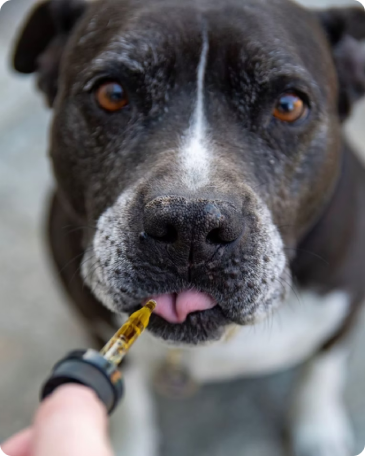 One area of growing interest surrounding CBD is its use in companion animals. Research has revealed CBD’s potential in humans, causing pet owners to wonder if CBD might have the same effects on their furry family members.
One area of growing interest surrounding CBD is its use in companion animals. Research has revealed CBD’s potential in humans, causing pet owners to wonder if CBD might have the same effects on their furry family members.
As mentioned previously, most animals have an endocannabinoid system (ECS), which includes dogs, cats, horses, and birds. Recent studies, particularly in dogs, have shown that CBD may be effective in companion animals as well. More research is needed to explore the use of CBD in pets, and scientists are just starting to fully understand its effects.
Join the Royal Family
Sign up today to stay current with alerts for promotions, product launches, & CBD news.









